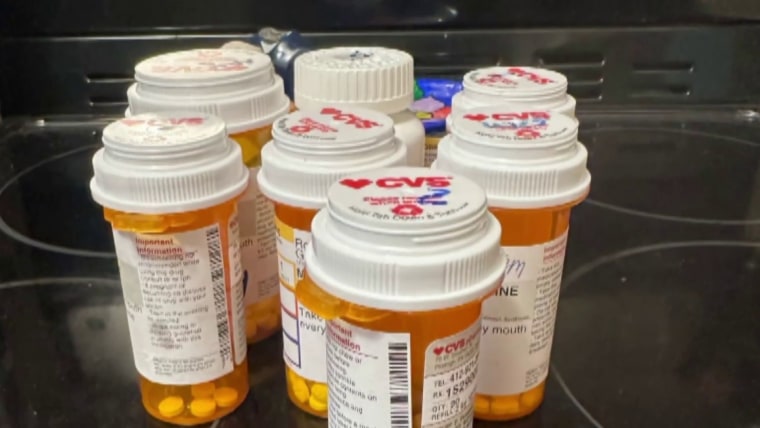Patients could save millions of dollars by buying prescription drugs through online pharmacy discount programs instead of through traditional insurance plans, a study published Monday in the journal Annals of Internal Medicine finds.
Online pharmacies, such as Mark Cuban Cost Plus Drug Co., have gained popularity in the U.S. because they offer the same generic drugs as retail pharmacy chains and insurance plans, but often at lower prices. Some online pharmacies, like Amazon Pharmacy and GoodRx, even offer prescription discount cards that cover some or nearly all of the cost for people paying in cash.
Researchers at the University of Toledo College of Pharmacy and Pharmaceutical Sciences in Ohio looked at 20 commonly prescribed generic drugs, including statins, heart failure medications and antidepressants. They then compared the prices that people paid out of pocket for these drugs in 2020 with the prices advertised by discount pharmacy card programs this year from Amazon and GoodRx.
The analysis included people with private health insurance and people with public health insurance, such as Medicare, as well as uninsured people.
They found that at least 1 out of 5 prescriptions were cheaper through the Amazon or GoodRx discount card programs compared to what patients actually paid out of pocket for the drugs.
The estimated potential savings were substantial: about $969 million for Amazon Pharmacy users and about $1.83 billion for GoodRx users.
“The takeaway really is that these discount card programs are potentially a tool to reduce the out-of-pocket burden for Americans,” said lead author Pranav Patel, who was a research analyst at the University of Toledo when he conducted the research.
The findings are in line with earlier studies, including one published in Annals of Internal Medicine last year, which found Medicare could have saved billions of dollars by purchasing generic drugs at the same prices offered by Mark Cuban Cost Plus Drug Co.
Prescription drugs are painfully expensive in the U.S.: People in the U.S. pay up to 10 times more for prescription drugs compared to other countries of similar size and wealth, according to the Rand Corp., a public policy think tank.
The Inflation Reduction Act, signed into law last year, included several provisions intended to lower the cost of prescription drugs for older adults, including allowing Medicare to negotiate prices directly with drug companies. Last week, the Centers for Medicare and Medicaid Services announced the first 10 prescription drugs that will be subject to Medicare price negotiations under the federal law. The negotiated prices will go into effect in 2026.
Patel noted that there are, however, potential drawbacks to the discount card programs.
Some programs may require a monthly prescription fee, which could end up equaling or exceeding the cost that someone might pay with insurance.
They can also be associated with “pharmacy shopping,” in which patients pick up different medications from different pharmacies in order to get the lowest prices — a tactic that can increase the risk of drug-to-drug interactions, Patel said, because the pharmacist at one pharmacy may not have knowledge of all of the medications that a patient may be taking.
“It may be a penny wise, pound foolish kind of scenario,” he said.
Mike Koelzer, a pharmacist in Grand Rapids, Michigan, said that “the value of face-to-face interaction with a health care professional shouldn’t be underestimated.”
Still, he noted that online pharmacy discount programs can provide significant cost savings, particularly for uninsured people, because the companies often negotiate directly with drugmakers and sell medications to customers at the cost that they paid for them in addition to a small markup.
That’s unlike insurance plans, which typically set a fixed price, or copay, for a drug. (A given drug, for example, may be $5, but the set copay may be $10.)
“The real potential benefit of these platforms is in their ability to negotiate better prices,” Koelzer said.
The study also found that patients who often paid more out of pocket for their medications were people without insurance or those who were insured but had not yet reached their plan’s deductible. It’s possible, Patel said, that these individuals were in so-called high-deductible plans, which usually offer lower monthly premiums, but require people to pay much more out of pocket before coverage kicks in.
Larry Levitt, executive vice president for health policy at KFF, said these online discount programs can provide “terrific deals” on generic drugs for some patients, although they are unlikely to offer much for people who have good insurance coverage.
The study found that when insurance did cover some or all of the cost of the medication, out-of-pocket payments were often equal to or lower than the prices advertised by the pharmacy discount programs.
“Drug pricing has been a black box, and these disruptors have brought some sunlight in,” he said. “But it remains to be seen how far they can go beyond the low-hanging fruit.”
Follow NBC HEALTH on Twitter & Facebook.







